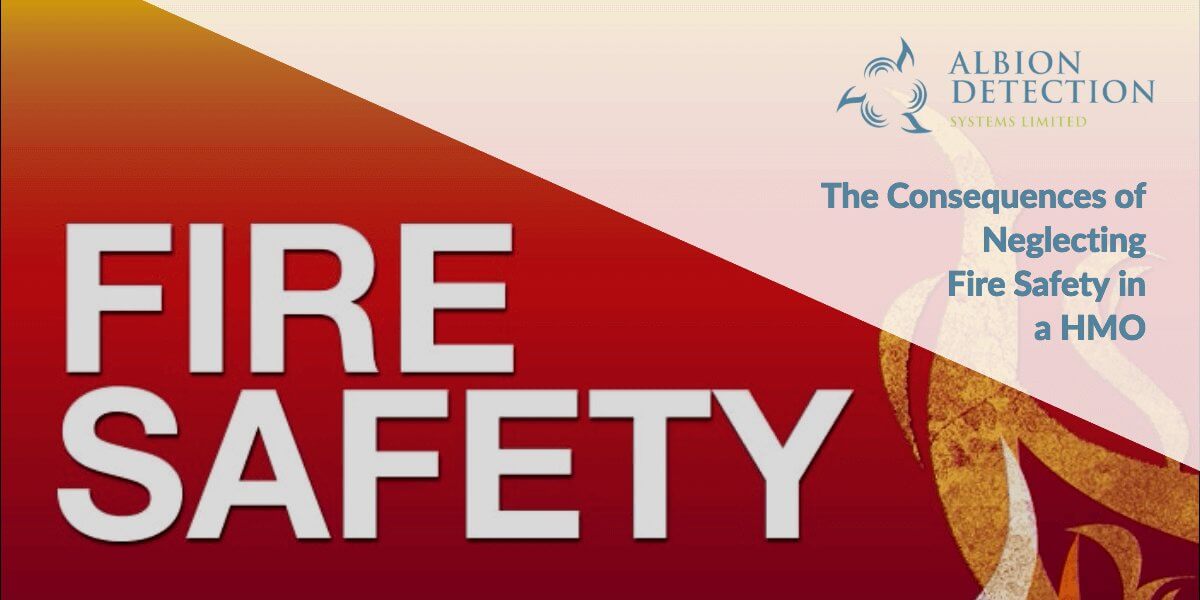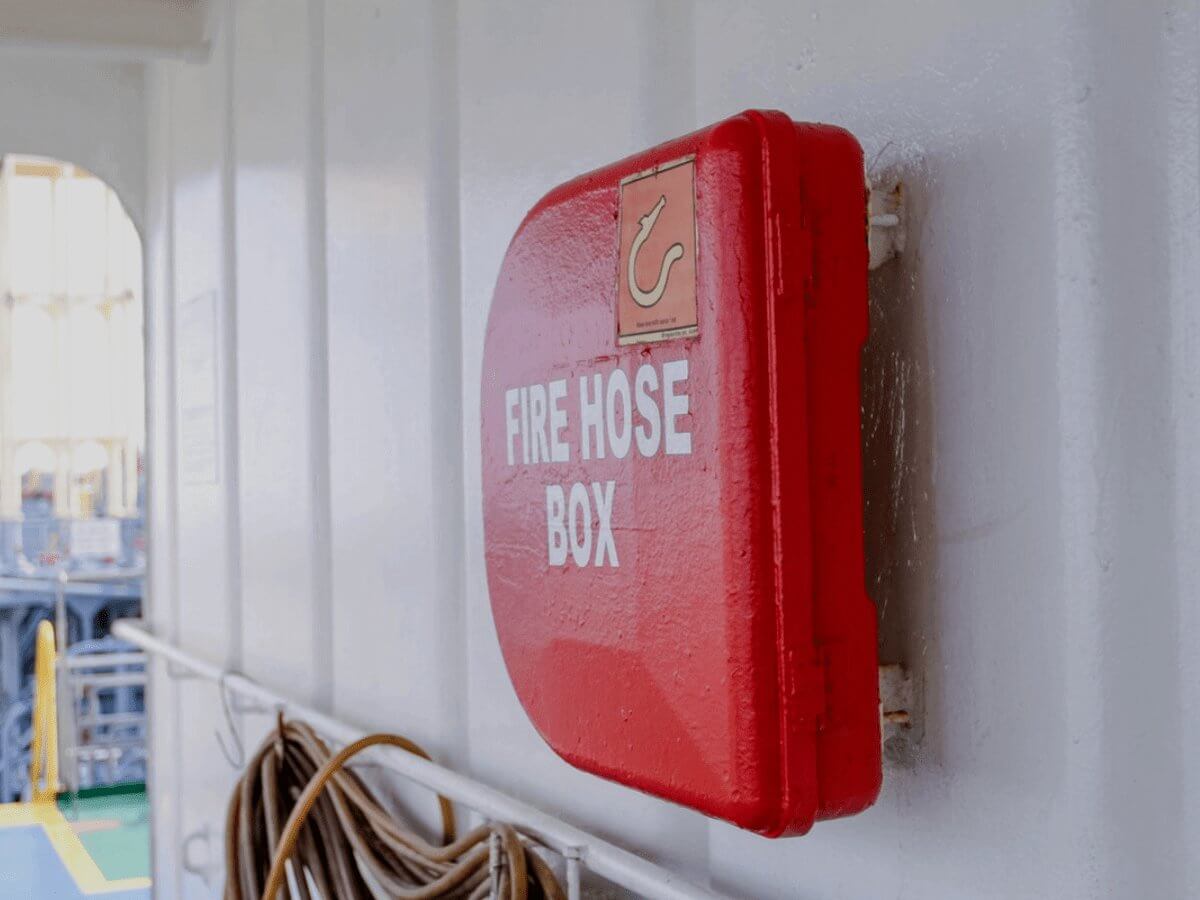
Introduction to The Consequences of Neglecting Fire Safety in a HMO
Neglecting Fire Safety in a HMO is simply not an option….as have become more popular in the last five to ten years, adherence to fire safety standards hasn’t always kept track.
The student let market, for example, is hugely profitable for many HMO landlords and, just one example of a multi-occupancy building requiring very specific fire safety standards being established and maintained.
Failing to meet all of your fire safety obligations as a HMO landlord has a number of both obvious and unseen consequences.
It can mean criminal charges, loss of money from rent, insurers unwilling to pay out on your policy and, most importantly, this approach puts trusting tenants in huge danger.
On the other side of the equation, it’s important for students living in an HMO to know their rights and what they should be looking for in terms of fire safety.

Neglecting Fire Safety in a HMO – The Repercussions
Firstly, it’s illegal not to perform a HMO fire risk assessment and to fail to provide the necessary measures identified in said assessment.
In the case of a fire and if no risk assessment has been done and no measures taken to mitigate fire, then you stand to see extensive smoke and fire damage to your property.
Insurers are also unlikely to honour your policy if fire safety precautions were lax or non-existent.
Before any of this happens, though, you may find yourself out of tenants to house if the university removes your HMO from its list of trusted providers.
And they will do this if they find sub-par or unsatisfactory fire safety measures in place.
Neglecting Fire Safety in a HMO – What HMO Landlords Need To Do
Outside of the normal fire safety regulations for residential properties, HMOs have enhanced fire safety requirements that landlords must abide by.
In an HMO property, high-risk areas like the kitchen must have additional, fit-for-purpose fire warning systems in place such as a fire alarm appropriate for use in a multi-occupancy building.
This is because, unlike the individual flats, the landlord of the HMO is the responsible person for all common areas in an HMO.
This also applies to emergency exits, and these must be unobstructed, not locked or otherwise stop tenants from using them in cases of fire.
There should also be a working, maintained fire extinguisher on every floor of the HMO, in addition to fire blankets in every shared kitchen.
Perhaps most importantly, egress points – if there is more than one in the building – should be able to withstand fire, smoke and fumes for an extended period of time – longer than would be the case in any of the HMO flats on-site.
This is because these exit routes, in the case of a medium or large-scale fire, are your tenants’ route to safety.
They need to be able to find their way in virtual darkness via the aid of things like signage, emergency exit lights and, if applicable, an addressable alarm system.
Any fire escape on-site must also have fire-resistant steps and feature an automatically closing door, which will deprive the fire of fuel.

Neglecting Fire Safety in a HMO – What Students Need To Know
When scouting out prospective new digs, it’s important as a student to look beyond the obvious good features – free wi-fi, big bed and a nice kitchen – and do some digging into whether your HMO landlord is doing everything they should with regards to fire safety and assessment.
Talking to existing tenants, if they are still in place, is a good way to obtain inside knowledge on just how seriously your prospective landlord takes his responsibilities.
Question what happens in the case of a false fire alarm in the HMO.
Does it happen often?
What’s the fallout?
Not all landlords will tell the truth or may talk about doing these things, but if they haven’t done it already and have tenants in place, then that should be a big red flag.
When looking over a HMO, check first to see if the landlord’s contact details are clearly and prominently displayed (this is a legal requirement).
This one simply check will tell you right off the bat if they are invested in fire safety measures.
Beyond this, just ask them some probing questions.
You don’t need to know the ins and outs of fire safety to get a handle on whether your landlord does.
If they can point out the fire safety features around the property – with special attention paid to common areas like the kitchen – you will get a fairly good idea of whether a landlord knows their responsibilities or errs more to the side of negligence.
Neglecting Fire Safety in a HMO – Access and Egress Areas
In terms of exiting the building in the case of a fire, a number of specific responsibilities lie with the landlord.
In a HMO property, the landlord must have a power supply for access and egress areas such as hallways and stairs that is dedicated only to this purpose.
Some landlords run this from a single flat supply and the tenant is completely unaware.
Not only does this mean the tenant pays more per month in terms of their electricity bill, it also means the landlord is breaking the law.
In terms of safety, this practice can also have big implications.
If, for example, there is a fire in the flat from which egress and access areas are powered, then a loss of power to this flat means a loss of power to these areas just when tenants need them the most.
This makes an already risky situation much more dangerous and will impact how well the fire service can navigate once they arrive.



